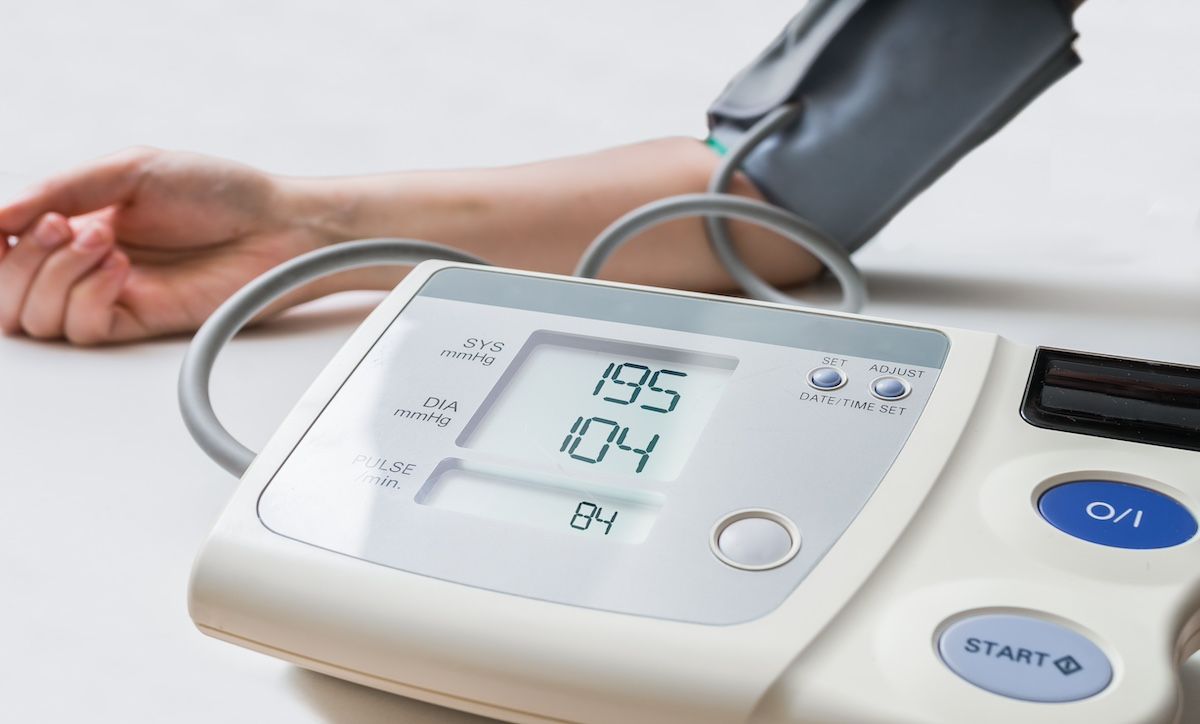- Center on Health Equity & Access
- Clinical
- Health Care Cost
- Health Care Delivery
- Insurance
- Policy
- Technology
- Value-Based Care
Pandemic Care Gaps Associated With Loss of Hypertension Control, Study Finds
Surprisingly, the investigators found people with uncontrolled hypertension before the pandemic actually had a slightly higher chance of getting their blood pressure under control during the crisis.
Patients with controlled hypertension before the COVID-19 pandemic had a decline in blood pressure control during the pandemic.
Image credit: vchalup-stock.adobe.com

A new study of more than 1.6 million US veterans shows that hypertension control dropped by 7% during the COVID-19 pandemic, mostly due to pandemic-associated delays in follow-up care.
The report, published in the journal Medical Care, highlights the ways in which the crisis negatively impacted patients’ health even aside from the direct impacts of the SARS-CoV-2 virus.
The study notes that the American Heart Association recommends that patients prescribed antihypertensive medications receive monthly in-office follow-up visits until their hypertension is under control. After that, follow-up visits should occur every 3 to 6 months, according to the association.
Such regular visits became difficult or impossible for many patients once the pandemic started in late 2019. Corresponding author Caroline Korves, ScD, of the Department of Veterans Affairs (VA) Medical Center in White River Junction, Vermont, and colleagues, noted that previous research has shown that the pandemic decreased overall blood pressure (BP) control, and that it led to larger gaps between office visits. In the new study, Korves and colleagues wanted to see whether and how those 2 phenomena were connected.
“Our goal was to assess whether hypertension control between visits varied during the pandemic and pre-pandemic period and whether differences in control for the 2 periods could be explained by differences in the length of follow-up interval between BP measurements,” they wrote.
To find out, the authors identified a cohort of patients of the VA system who had hypertension both before (March 2019-February 2020) and during (March 2020-February 2022) the pandemic. They found 1.65 million veterans who met that criteria and had sufficient BP data to be included in the study.
Next, they looked at the intervals between patient follow-up visits in the prepandemic period, as well as the interval between the last prepandemic visit and the first visit after the pandemic had started. They then analyzed the data to see whether there were any links between follow-up intervals and BP control.
The investigators found that, among people with controlled hypertension before the pandemic, there was a 7% decline in BP control during the pandemic (relative risk [RR] 0.93; 95% CI, 0.93-0.93). As expected, patients with longer follow-up intervals were more likely to have uncontrolled hypertension both before and during the pandemic.
“While we did not assess how increased interval could contribute to loss of BP control, it is possible there were missed opportunities to modify treatment and maintain or achieve hypertension control with decreased monitoring,” Korves and colleagues wrote.
The researchers found that the main reason for the decline in control was the increasing gaps between follow-up visits. After adjusting for those follow-up intervals, they found that the likelihood of maintaining BP control dropped by just 2% during the pandemic, suggesting the pandemic itself had only a marginal impact on patients’ BP rates.
Ironically, among patients who had uncontrolled hypertension at the start of the pandemic, the odds of getting their BP under control increased slightly during the pandemic, the investigators found (RR of gaining control 1.01; 95% CI, 1.01-1.01).
“Further, while increasing length of follow-up interval was associated with a lower likelihood of gaining control in the pre-pandemic period, this was not true in the pandemic period in the beginning,” they wrote. “After an uncontrolled BP in the pre-pandemic period, the probability of
control during the pandemic period increased with time up to 6 months and then reverted to the same pattern we saw in the pre-pandemic period. It is unclear why this happened.”
The authors said the study helps underscore the importance of regular care for people with hypertension, which they noted is one of the top public health challenges in the US.
They said more research is needed to better understand how best to prevent future disruptions in care during emergencies, and how to help patients maintain BP control when disruptions are unavoidable.
Reference
Korves C, Peixoto AJ, Lucas BP, et al. Hypertension control during the coronavirus disease 2019 pandemic: a cohort study among US veterans. Med Care. 2024;62(3):196-204. doi:10.1097/MLR.0000000000001971
